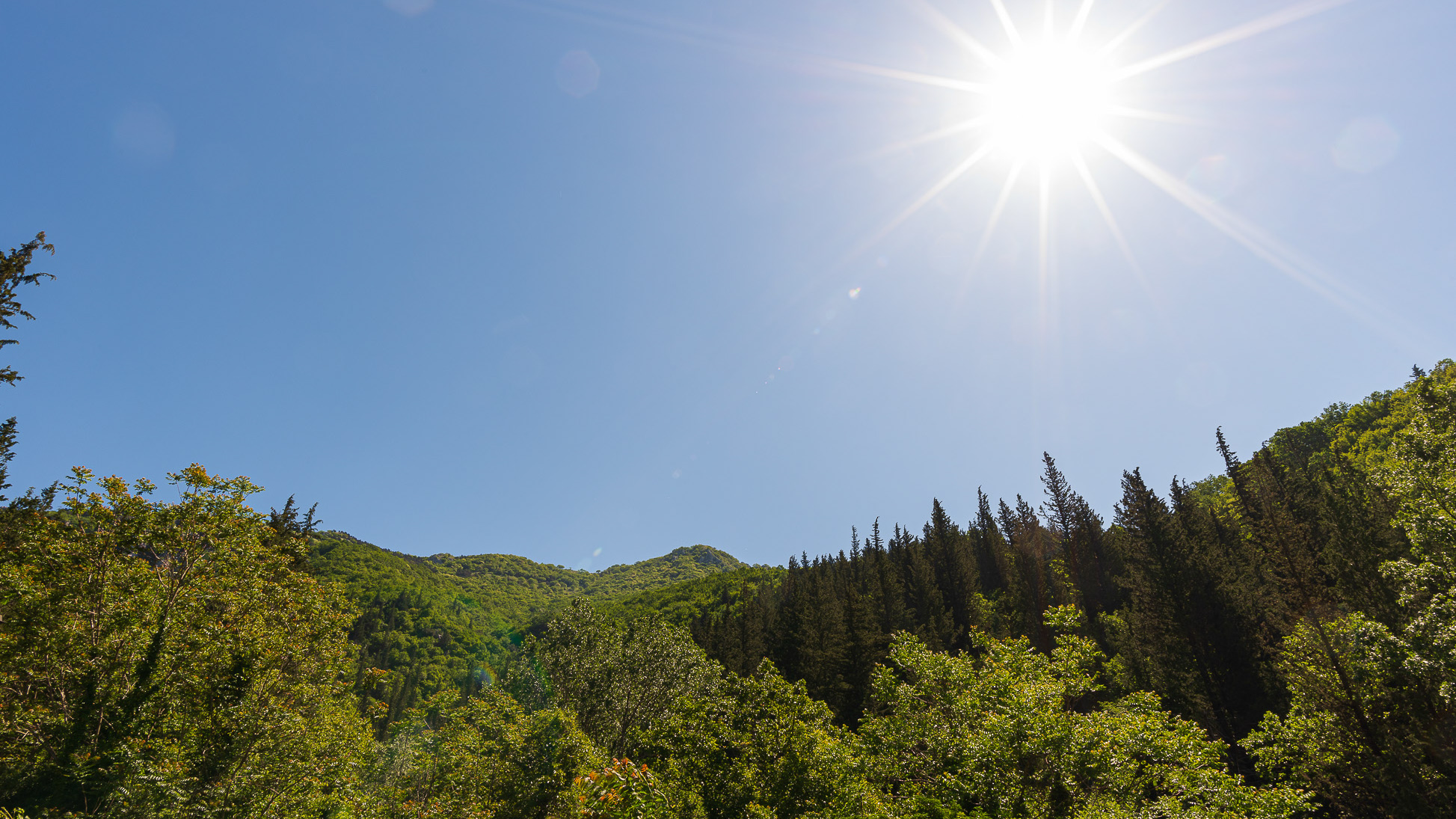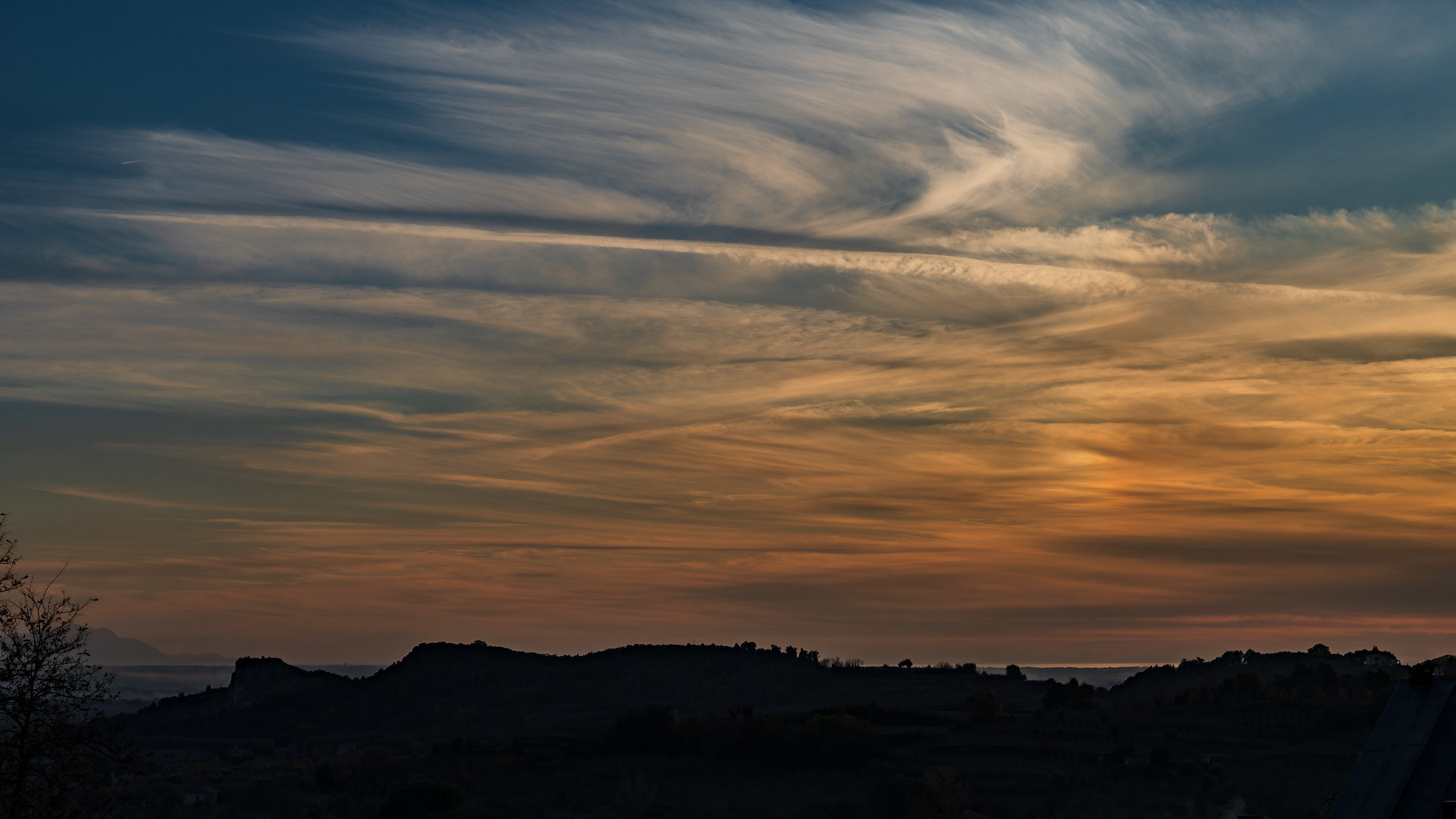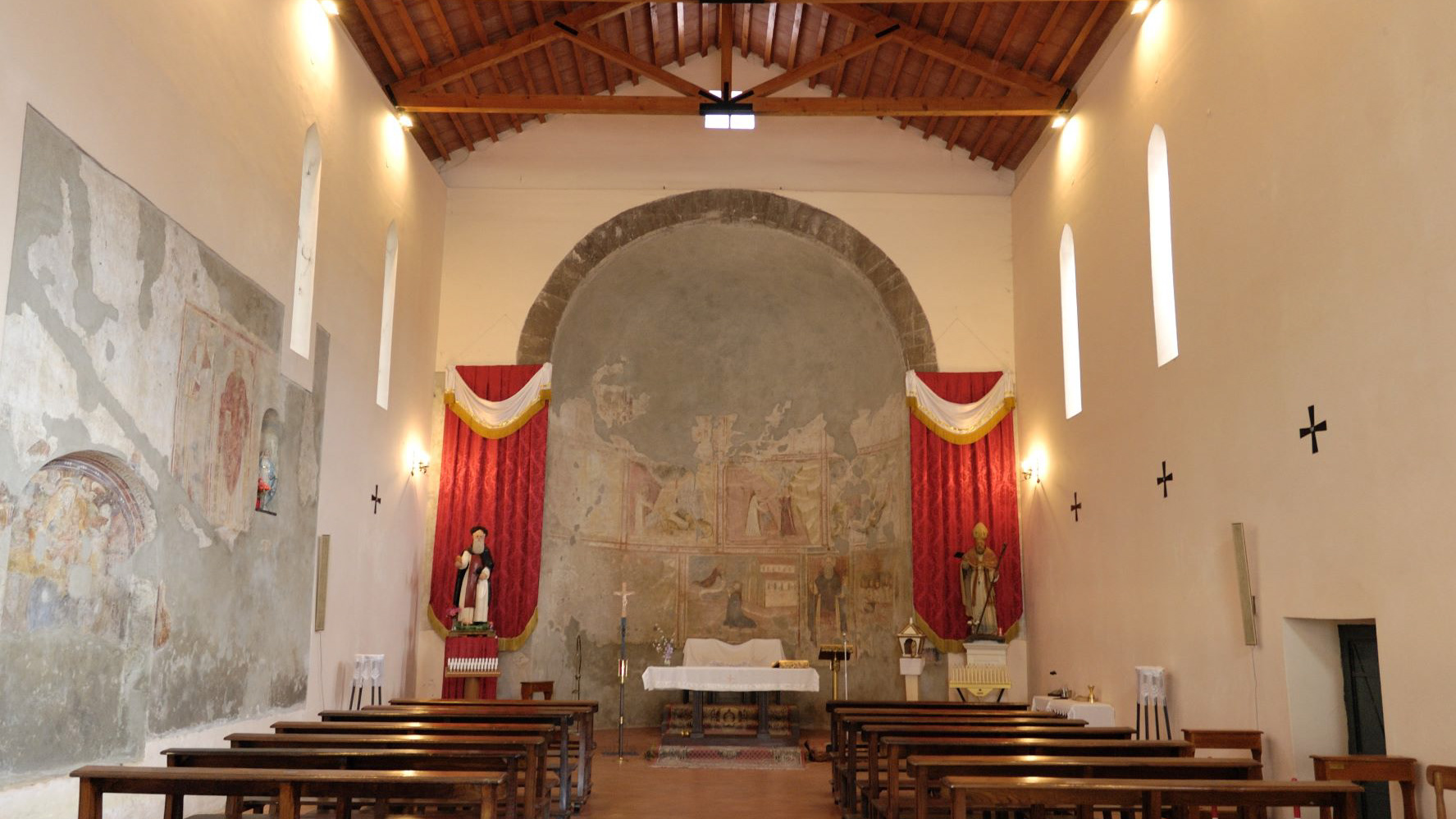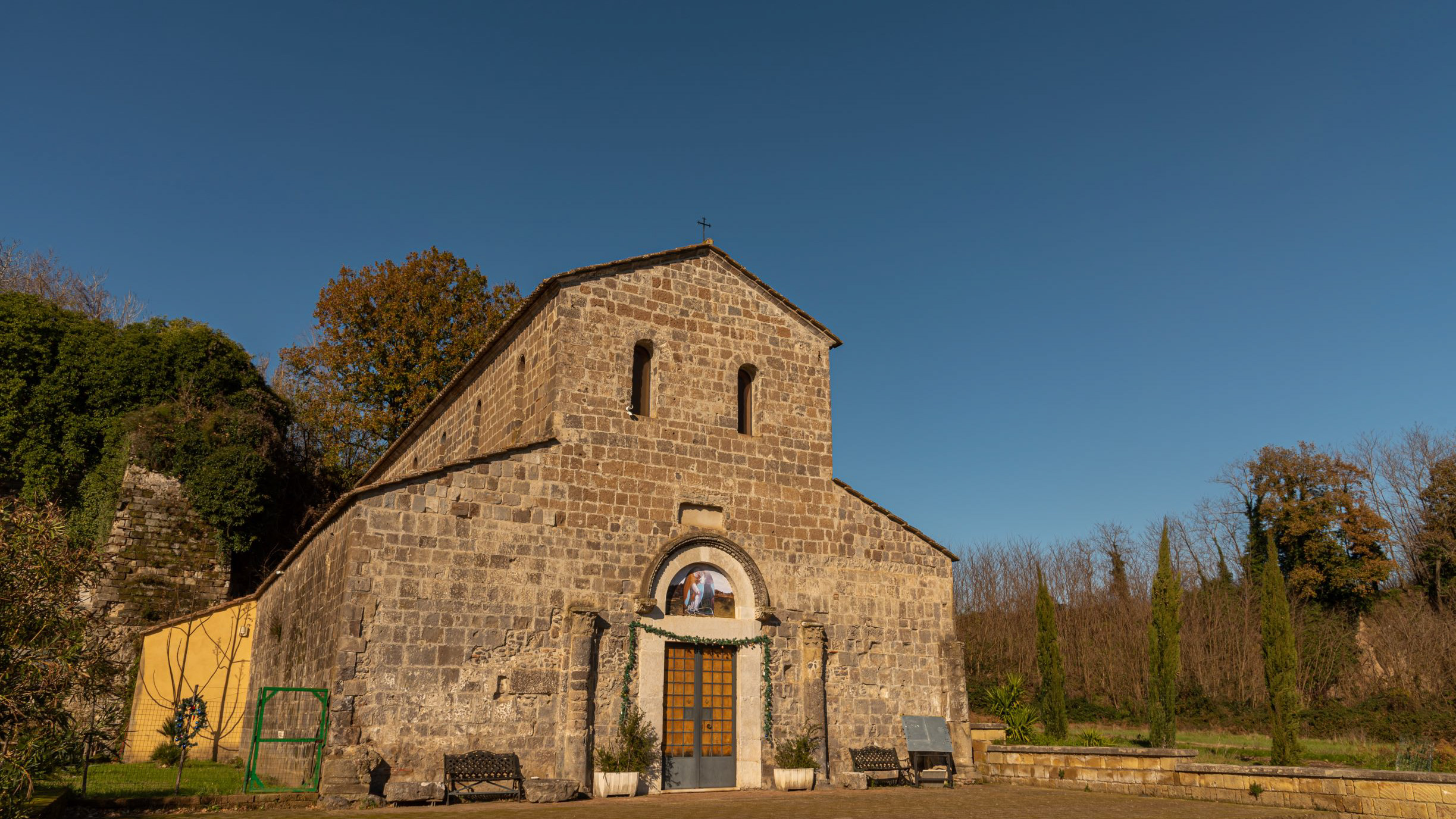The Royal Palace of Caserta
2017
The Royal Palace of Caserta is a royal palace, with an adjoining park, located in Caserta. It is the largest royal residence in the world by volume and the historical owners were the Bourbons of Naples, as well as a short period in which it was inhabited by the Murat.
You may also like

2022
Fontegreca. La Cipresseta
The natural cypress forest extends above the town of Fontegreca, in the Zappini wood up to the valley of the Sava river. It is a destination for tourists, for its very healthy air.

2021
Teano. The Dome. Exteriors
The cathedral, originally dedicated to San Terenziano, was later named after San Clemente. Construction began in 1050 by Bishop Guglielmo, to replace the old cathedral of San Paride ad Fontem, located outside the city walls. The works were completed in 1116 by Bishop Pandulfo. The building has a basilica structure divided into three naves by two rows of columns. In 1608 it was damaged internally by a fire that almost completely destroyed the cosmates ambo, subsequently recomposed using the remains of the previous one integrated with the marble slabs of a fourteenth-century sepulchral monument already present in the church and positioned on twisted columns, two of which rested on fountain lions. During the 16th century the Romanesque apse was modified and on that occasion a precious carved wooden choir was built in the presbytery, built in 1539 by the Benedictine Antonio Maria Sertorio. The choir underwent two restorations, the first in the 17th century and the second in 1957, following the damage suffered during the Second World War.

2025
Campania Felix. Spectacular sunset

2008
Benedictine Abbey of S. Angelo in Formis
The church, dedicated to San Michele Arcangelo, rises along the western slope of Mount Tifata. Initially in the documents the building is indicated as ad arcum Dianae ("at the arch of Diana"), recalling that it stood above the remains of the temple dedicated to this divinity, while later it is referred to with the denominations ad Formas , Informis or in Formis. The etymological interpretation of the new name is controversial: on the one hand, the hypothesis is that it derives from the Latin term forma ("aqueduct"), and that it indicates the proximity of a conduit or aquifer; while on the other hand the term is considered derived from the word informis ("formless", and therefore "spiritual"). The remains of the Roman temple were found in 1877, and it has been noted that the basilica retraces its perimeter, adding the apses at the end of the aisles. The first construction of the basilica can be traced back to the Lombard period, on the basis of the widespread diffusion of the cult of the archangel Michael among the Lombards at the end of the sixth century. At the time of the bishop of Capua Pietro I (925-938), the church was donated to the monks of Montecassino, who wanted to build a monastery there. The church was then taken from the monks and given back to them in 1072 by the prince of Capua, Riccardo. The then abbot Desiderio di Montecassino (the future Pope Victor III) decided to rebuild the basilica (1072 - 1087) and still respected the architectural elements of pagan origin. To him we owe the frescoes of the Byzantine-Campanian school that decorate the interior and which constitute one of the most important and best preserved pictorial cycles of the time in southern Italy. The reconstruction of the portico in front of the church, with new frescoes, and a reconstruction of the bell tower following a collapse have been attributed to the 12th century
2022
Teano. Convent of Santa Reparata
It is one of the most important convents in Teano, also because inside the building there are the remains of the Saint who is the Coopatrona of Teano, as well as the patron saint of Florence.

2021
Teano. Church of Sant'Antonio Abate

2018
Teano (CE) - Sunsets

2020
Teano. Church of San Paride ad Fontem
The building of S. Paride is a church with a basilica structure with three naves, and termination with a semicircular apse. The facade, where it is possible to admire the building technique in tuff blocks arranged in regular rows, is characterized by the presence of two semi-columns in tuff on the sides of the portal, and a third in the right corner. The half-columns each rest on a pilaster, also in tuff. A fourth semi-column must have been present near the left corner, where there is still a Tuscan base still in tuff. These still retain the Corinthian capitals of reuse, also in local tuff. The entrance is rather simple, with a molded secmicircular frame supported by two shelves with inlaid motifs in plants. The marble frame still preserves the kyma lesbio decoration, followed by a curb with parallel lines and a second frame with denticles. The frame overlooks a lunette where traces of a fresco can no longer be read. The whole is surmounted by two mullioned windows. Internally, the naves are divided into six bays and separated by arches supported on each side by five quadrangular pillars. The light comes from the mullioned windows placed on the perimeter walls. A large opening, now flanked, also with a round arch, is visible along the left perimeter. The only piece of furniture is the so-called chair of S. Paride, made up of a reddish tuff block. The interior is rather simple, and still has a small crypt with burials in the crate.

2018
Teano (CE) - Monastery of Santa Reparata
The Monastery of S. Reparata, probably founded in the 9th century, was canonically suppressed after the Council of Trent, due to the prohibition against holding female monasteries outside the town. The nuns were welcomed in the Monastery of S. Caterina.
The Monastery of S. Reparata is located along the road to Roccamonfina, in the Pino district and its foundation is not prior to 804 as it is not mentioned in the privilege of Charlemagne, which lists all the Benedictine possessions in Teano. The most probable date is the second half of the century. IX. According to the Bishop Mons. Domenico Giordano, the transfer of S. Reparata to the Cathedral took place in the year 880. It is one of the most important monasteries in Teano because the remains of Santa Reparata, who is the patron saint of Nice, are kept inside the church. his diocese, of the cities of Atri and Casoli; she co-patroness of Florence, of Teano, of the diocese of Teramo-Atri and patroness and protector of the municipality of Pesco Sannita.
2024
Vairano Patenora. Collegiate Church of St. Thomas
It is the only church built within the city walls ("intra moenia") and is the oldest of those that exist today in the town (13th century). It has a single nave with two side altars and a central one
